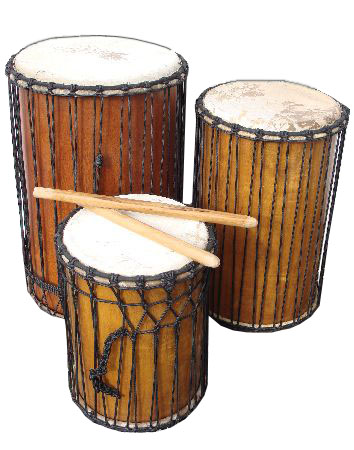A Story
A story is told about a group of people who live close to nature. Originally folks said it came from "Africa" but I think that was a convenient way for the author to say "someone not like me" so we don't need that part.This is the story, and the story goes... [T]here is a village where the birth date of a child is counted not from when they were born, nor from when they are conceived but from the day that the child was a thought in its mother’s mind. And when a woman decides that she will have a child, she goes off and sits under a tree, by herself, and she listens until she can hear the song of the child that wants to come. And after she’s heard the song of this child, she comes back to the man who will be the child’s father, and teaches it to him. When a child is born, the community gets together and they sing the child’s song. When the child begins it’s education, people get together and the child sings their own song. When they become an adult, the community gets together again to sing it. When it comes to your wedding, you hear your song. If that child, now grown, strays from the path of love, from their true self, the community gathers to sing their song and invite them back to themselves. Finally, when their soul is going from this world, family and friends come near and, like at their birth, sing their song to accompany them in the journey.
I am opening up in sweet surrender to the luminous love light of the one. (Sufi)
We start with the one. Some might call it the downbeat, some might call it the heartbeat. The symphony conductor shows us the one with the conductor’s wand. You might be talking about the time signature or you might be asked to just feel it. When do we join the song? How do we come together?
One of my drum teachers, Ubaka Hill, calls the rhythms we do, drumsongs, and a group of us making drumsongs together, is a drum-orchestra. We are all a part of the drumsong orchestra.
In a drumsong orchestra each drum has a responsibility. The mama drum. That’s the songba, will you say it with me? song-baa. The mama drum gets everyone to their appointments on time. It is the timekeeper. The baby drum is the kenkeni. Let’s say that together, ken-ken-ee. That drum makes us laugh, it is always doing the new and different, and the rest of the drums have to keep the kenkeni safe while it does its own thing. The grandpa drum is the junjun, let me hear you, joon-joon. It passes along wisdom, sharing longer stories. And then, the djembe. jim-bay. The first Djembe sings the main song. The bass djembe connects the song to the heartbeat. The lead djembe plays the signals to start and end the song. It is there to relate to the dancers, mimicking and cuing dance steps. The whole drum orchestra sings for the dancers so they have a rhythmic ground to dance upon.
No matter what unique song, each drum and each person brings to the symphony of life, we are all connecting through the one. We all must be faithful to the shared heartbeat. In your life, where is that which is larger than you? Where do you find the spirit of life? Where do you find that heartbeat that we all share?
Listen listen listen to my heart song (Pagan)
---
It began because the drum teacher did not allow spectators. Now, after 30 years learning, performing, and teaching West African drum-song the insights, ecstasy, and depth of the tradition have inexorably changed my soul for the better.
Invite Amy to a Saturday workshop where we learn drum-songs "Oya-De", "Fanga" and "Lamba." Complete the journey with a Sunday service where we will perform these three pieces and I will share stories and lessons from my journey, from expressing joy and sorrow, to building community.
---















